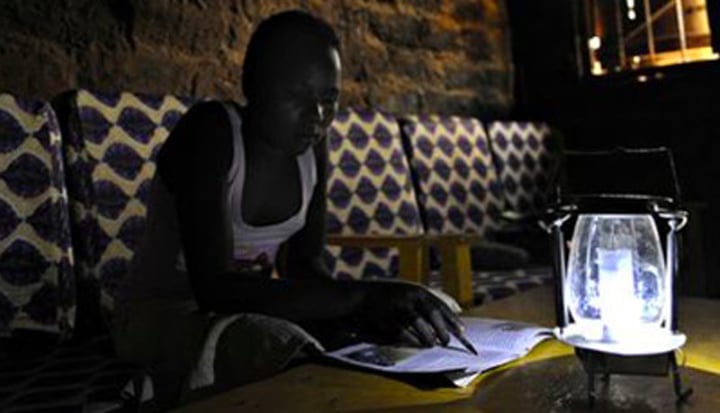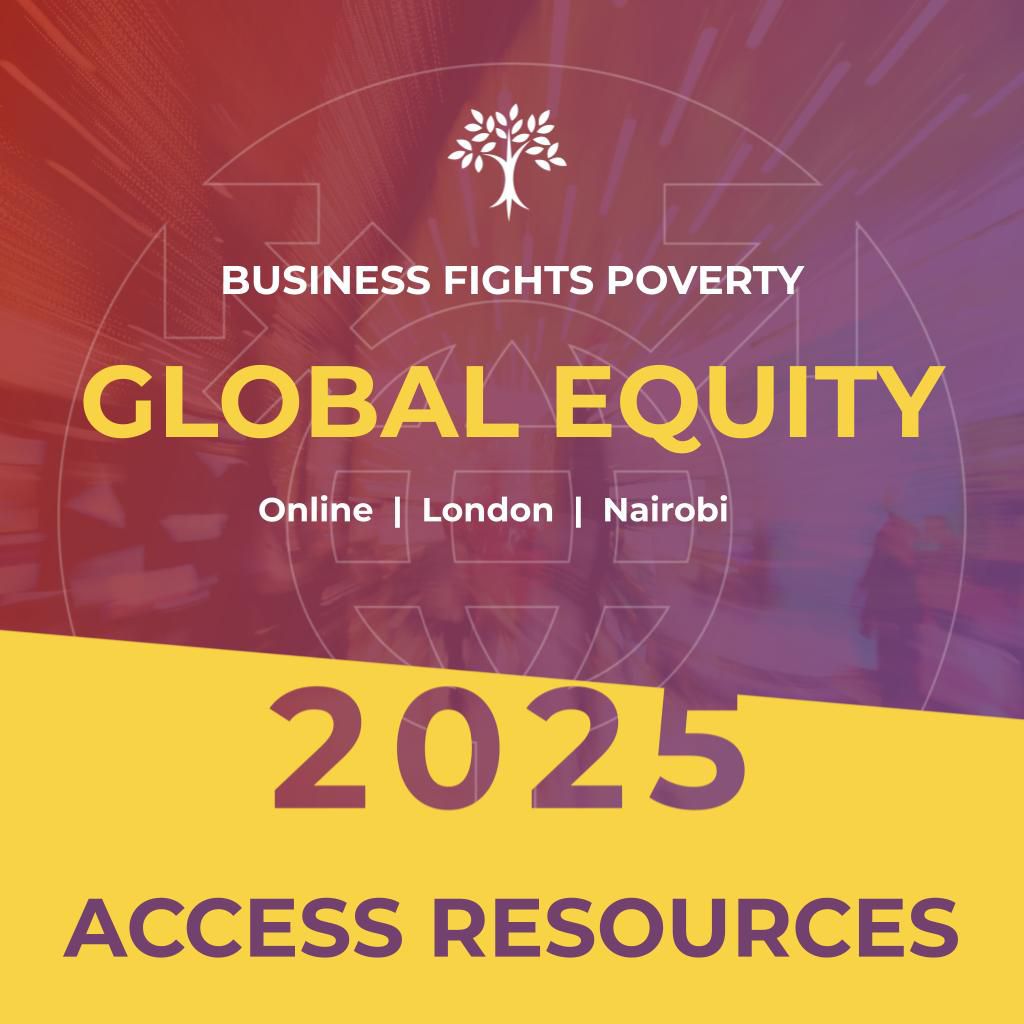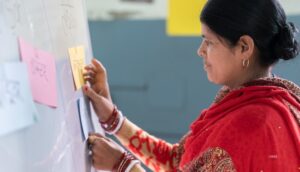Rather than trying to sell energy products with high up-front costs, innovative businesses are selling energy services
A good starting point for a business is usually to target customers with money, and in places that are easy to reach. So it might not seem an obvious business opportunity to provide electricity to the 1.3 billion people in the world who currently lack access to grid electricity. Many of these people are very poor, living in remote areas with few roads or other infrastructure to connect them to the rest of the world.
But for-profit businesses are starting to do just this, and in increasingly creative ways, offering new hope of ending energy poverty, which stymies both human and economic development. Solar electric (photovoltaic) panels are the preferred technology for electricity generation, as you don’t need huge infrastructure – solar can power something as small as an individual reading lamp.
The good news is, the cost of solar systems has come down rapidly over the past decade, at the same time as quality has improved. A small, decent quality solar lamp now retails for around £6, a brighter lamp with a phone charger for £21, and a “plug-and-play” solar system that can be installed in a home to provide several lights and phone charging, for as little as £59.
Looking at what people currently spend on energy puts these costs in context. Using a single, dim kerosene lamp costs typically 12p a day in East Africa. Paying to have a mobile phone charged costs around the same – not taking into account the time to get the phone to somewhere with electricity. So the savings on kerosene and phone charging made over six months would more than cover the cost of a bright lamp and phone charger.
But the initial cost of even the smallest lamp can be a barrier for a household that works on a daily budget, and poor families are rightly cautious about the risk of spending on new technologies.
Some new businesses are taking a different approach. Their business model is to retain ownership of the technology, and thus the associated risk, and to sell energy as a service – such as light and phone charging – for an affordable daily or weekly fee.
Selling electricity as a service brings its own challenges. One is how to enable people to pay in small amounts. There’s a transaction cost for each payment, so the smaller the payment, the larger – proportionally – the transaction cost.
Also, it’s a challenge to keep customers paying. Unlike a selling a product, the business profit doesn’t just come from just a single transaction. So good customer service is essential and that is, of course, good for the customer. Anything that goes wrong with the technology remains the business’s problem. But this encourages businesses to drive up quality standards, and that has to be good for the whole sector.
A number of businesses are finding innovative ways to tackle these challenges, bringing benefits for customers and setting a benchmark for the rest of the sector. Two that stand out are Off Grid Electric in Tanzania and Mera Gao Power in India.
Both businesses provide a basic service of two bright lights and a mobile phone charger. These are the two technologies that probably make the biggest impact on lives for the amount of electricity consumed: lights mean people can read or work in the evening, while being able to charge a mobile phone means they can access information and mobile money services.
Off Grid Electric provides these services from small solar systems that are installed in customers’ homes. Systems are activated by paying a daily fee, and all payments are made through the money transfer services that are offered by many mobile phone providers in East Africa.
Using mobile money allows very flexible payments: customers can pay for just one day at a time, or if they want to can pay for weeks or even months in advance, and it’s possible to upgrade to a higher level of service by paying a higher fee. Local agents, backed up by a customer care team, sort out any technical problems and make sure customers are happy.
Mera Gao Power has taken a very different technical route. Instead of individual systems, it installs solar-powered micro-grids, each serving up to 30 neighbouring houses in villages in India. A fee collector and technician visit weekly to take payments and check the systems are working properly.
The tight-knit communities provide strong social pressure to pay, but also help out when people have real trouble doing this. This business model does not, as yet, provide the flexibility to pay for different periods, or to upgrade the service. However, the fees are lower because the micro grid works out cheaper.
These are both for-profit businesses, set up to provide a return to investors, at the same time as providing a service to low-income customers. With Off Grid Electric now reaching more than 15,000 families in Tanzania and Mera Gao Power providing light to 20,000 families in India, both are proving that a business-like approach to increasing access to solar power is a win-win for both people and profit.
Anne Wheldon is technical adviser at Ashden. Mera Gao Power and Off Grid Electric are both finalists for the 2014 Citi Ashden Award for Innovation in Finance. Winners will be announced on 22 May.
The role of business in development is funded by Business Call to Action. All content is editorially independent except for pieces labelled advertisement feature. Find out more here.
This blog was previously published on the guardian and is reproduced with permission.










